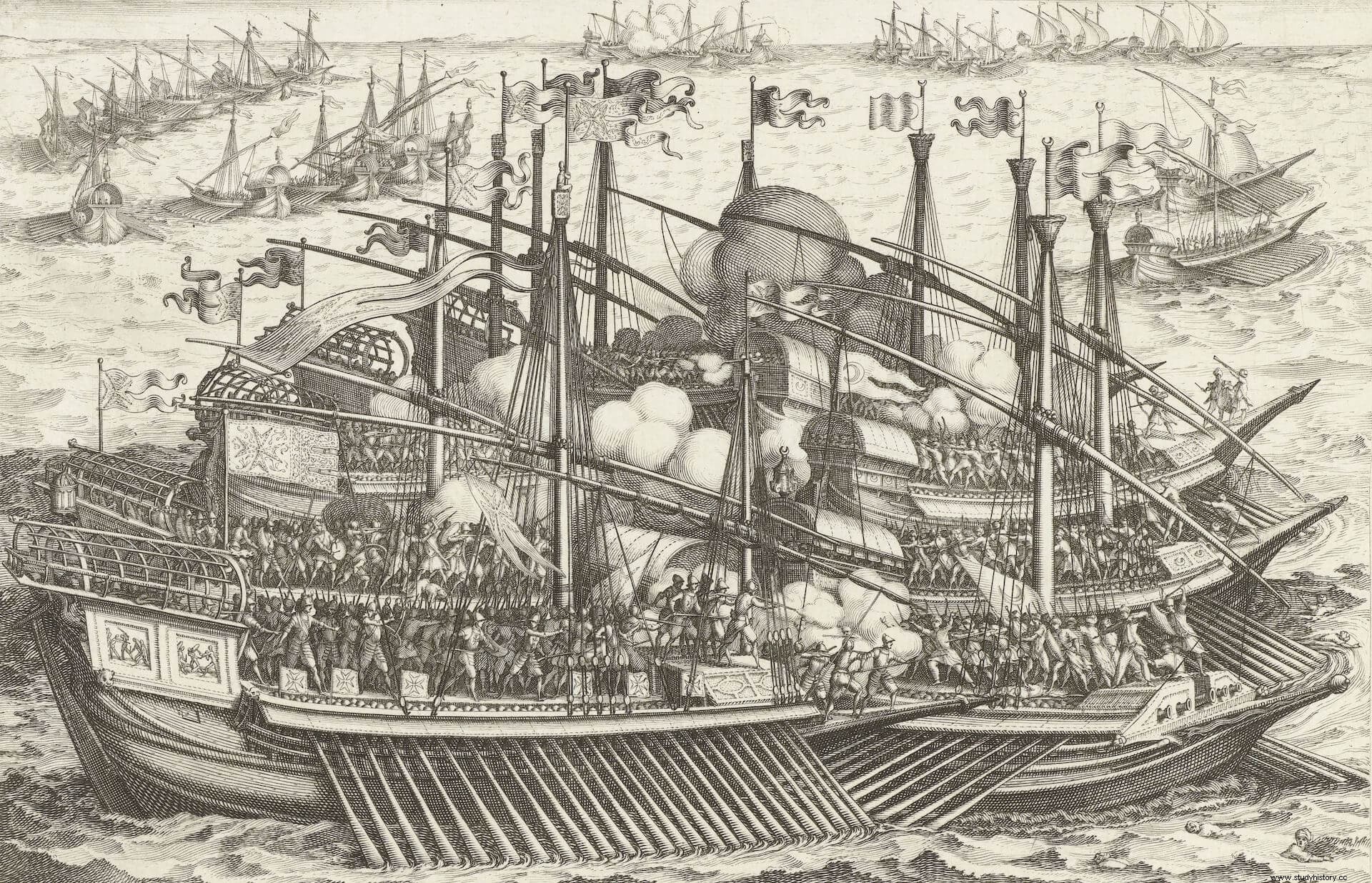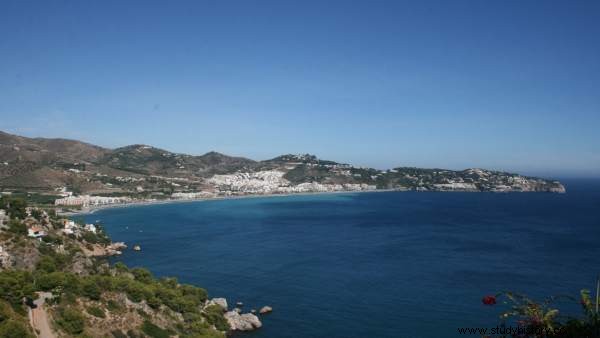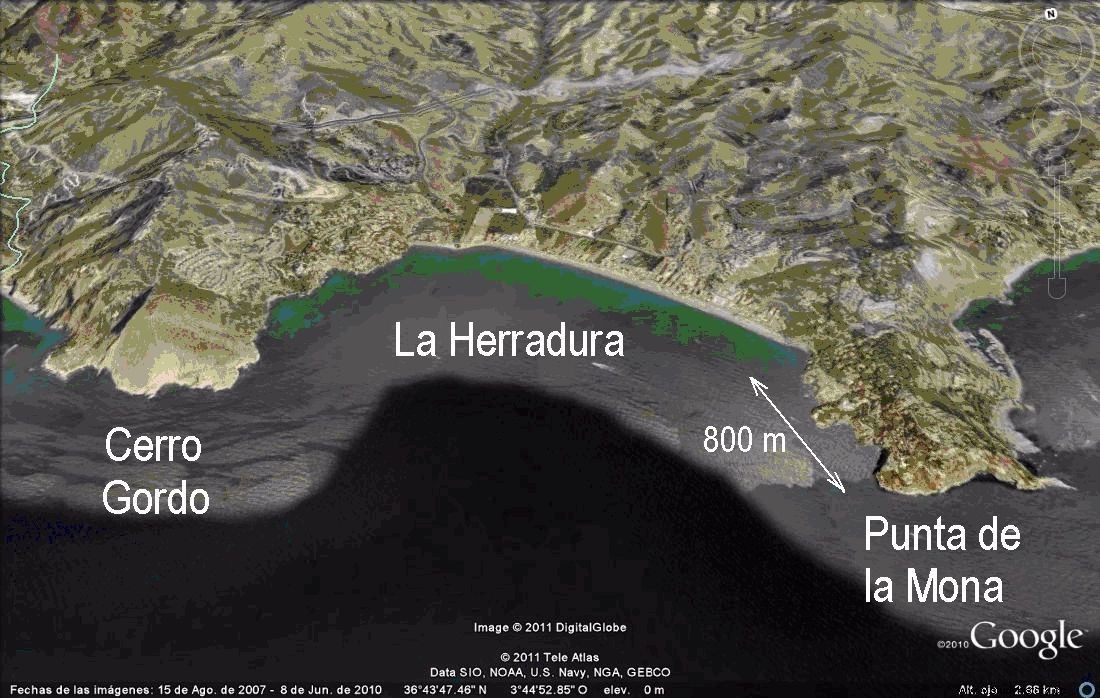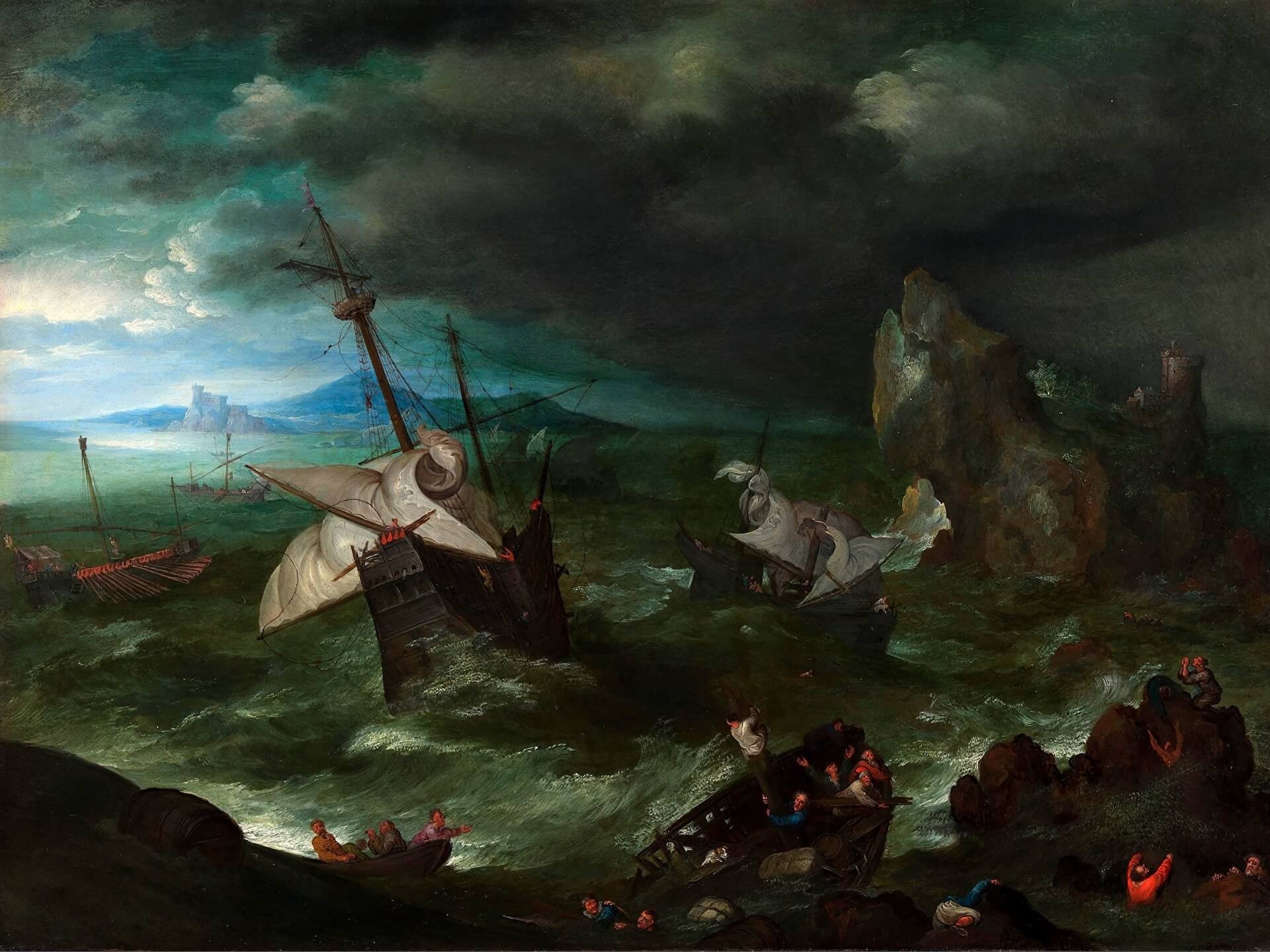
Since the 16th century, the phenomenon of Barbary piracy it had become endemic, especially due to the financing and support provided by the Ottoman Empire, multiplying the assaults that were carried out from the coastal places such as Algiers against the populations of the kingdom of Granada. To fight against this piracy, Castile had occupied several strongholds in North Africa (Melilla, 1497; Mazalquivir, 1505; Orán, 1509; Tripoli, 1510) and during the reign of Carlos V the galley fleet was rearmed and reinforced, starring in new clashes with the Berbers in Tunisia (Tunisia Day, 1535 ) and Algiers (Day of Algiers, 1541 ) and applying a new Mediterranean defense strategy.
During the reign of Felipe II many of the squares were lost, going to raise the defense of the coasts of the Italian and Iberian peninsulas in the so-called "galleys of Spain", which were divided into two squads:one under the command of the Genoese Juan Andrea Doria , concentrated in the Sicilian square of Messina, with the aim of controlling the Sicilian channel and coming to the aid and defense of the southern and eastern coast of Italy; the other squad was commanded by Juan de Mendoza and it was concentrated in Sardinia, with the aim of eliminating the corsairs and helping the Levant and North Africa, as well as carrying out an annual summer campaign through the islands of the western Mediterranean. This last squadron was made up of twenty-eight galleys:twelve from the squadron from Spain, six from Naples, six from the Marquis Antonio Doria, two from the particular Bendineli Sauli, and another two from the particular Estefano de Mari.
In July 1562, the Berbers began the siege of Oran and Mazalquivir, two of the last strongholds in North Africa, for which Philip II ordered Juan de Mendoza to go and rescue both places. Thus began the journey of the squadron to Malaga to resupply and where to the 2,100 soldiers, 1,250 sailors and 3,600 oarsmen, the wives and families of the soldiers of Oran had to be added. It was the trip to the shipwreck.

After provisioning in Malaga, the squad waited for a favorable wind, but on October 18, starting at seven in the afternoon, it began to sting due to the bad weather (the drizzle would be persistent throughout the event), which added to the exposed that the port of Malaga was on the eastern swell, led Mendoza to order that the city be abandoned to go to the La Herradura bay . This was a bay well known by sailors, corsairs and even by Mendoza himself, who had already saved the squadron there on two occasions, as it used to provide refuge as it was sheltered on the west by Cerro Gordo and on the east by Punta de la Mona. .
From the beginning, however, there began to be problems:after rowing out of the port and advancing a few kilometers around what is now Rincón de la Victoria, the easterly wind disappeared and began to blow from land, causing one of the galleys to Neapolitans, the Horse, rammed the Sovereign, from the squadron of Spain, and had to be towed. After a brief respite in which the wind blew to the southwest, around Nerja it blew east again, forcing the galleys to move again with the force of the oars until finally reaching La Herradura.

Around ten o'clock in the morning of the next day, the ships began to position themselves in the eastern part of the bay, ending the maneuver around eleven o'clock, when the sky had already begun to clear and the Punta de la Mona sheltered them. from the annoying and dangerous easterly wind. It was a half hour break. The southwest wind returned and brought with it the strong storm :winds of almost 100 km/h, waves between six and nine meters. The speed and force with which nature shook the squadron prevented even time to weigh anchor, leaving the galleys pushed against each other or against the cliffs of Punta de la Mona. The Santángel lost her rudder and was dragged to the beach; the Patron and the Horse turned on themselves; the Bárbola collided with a rock and was dragged to the beach; La Capitana, a ship commanded by Mendoza, was rammed by the waves until she was crossed by them. While the people tried to swim in the sea, but the undertow of the sea, the logs and all the floating objects kept colliding with them, killing many. This is how Juan de Mendoza died, when the mast of his ship hit him in the head while he was trying to swim and dragged him to the bottom of the sea.
When at four in the afternoon the storm calmed down Of the twenty-eight galleys, twenty-five remained at the bottom of the sea, saving only the Mendoza, the Sovereign and the San Juan, the three belonging to the Spanish squadron, thanks to the fact that they managed to surround the Punta de la Mona shortly after it began. the storm. It is difficult to know what the number of human losses was, it is enough to know that five people out of a total of more than four hundred were saved from La Capitana. Those who had the best luck were the galley slaves, because of the 3,600 they were able to save 1,740 thanks to Mendoza ordering their release, although later they would be captured again and put back in the galleys.

The destruction in just three hours of the Spanish galley squadron, which was supposed to come to the aid of Oran and Mazalquivir, gave a new impetus to the siege to which the Berbers subjected both places. To help them, it was necessary to send part of the squadron from Messina under the command of Andrea Doria, weakening the one that guarded the Strait of Messina and that watched over the Ottoman squadron, together with those that could be gathered from Barcelona and Genoa, under the command of Álvaro de Bazán and Francisco de Mendoza, cousin of the late Juan de Mendoza. Although this squadron was successful in lifting the siege of both squares and, just a decade later, would defeat the Ottoman army at the Battle of Lepanto (1571), the shipwreck of La Herradura came close to ending the Spanish presence in two key bastions and it tensed the resistance and operability of the Spanish navy in the central Mediterranean.
Bibliography
Fernández Duro, C. (1867):Shipwrecks of the Spanish Armada . Madrid.
Garcia Castro, F.J. (2018) “The origin of the Spanish Navy in the Mediterranean” in Desperta Ferro Special XIV.
Sánchez-Laulhé, J.M. and Del Carmen Sánchez, M. (2012) "Meteorology in the shipwreck of the Spanish fleet of galleys in La Herradura (Almuñécar) in 1562" in Boletín AME 38.
